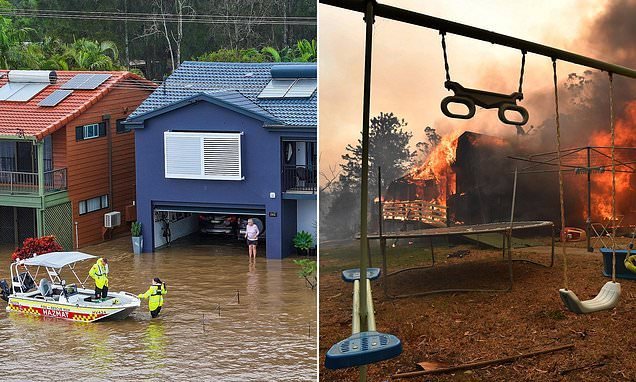Australia’s Climate Timebomb: One Million Homes to Become ‘Uninsurable’ by 2050 as Disaster Costs Soar to 4% of GDP
- Million-dollar properties will be left to rot as insurance costs skyrocket and affordability plummets
- Climate catastrophes will wipe out 4% of Australia’s GDP by 2060 – equivalent to a massive recession
- Experts warn of ‘irreversible’ damage to the economy as the country hurtles towards a 3C warming scenario
The latest National Climate Risk Assessment paints a dire picture for Australia’s future, with one million homes set to become “very high risk” zones by 2050. The report warns that the insurance industry will be unable to cope with the scale of the disaster, leaving properties effectively uninsurable.
Dr Emma Aisbett, an economist at the Australian National University, says the $611 billion hit to property values is only the tip of the iceberg. “What’s really driving in these models that loss in property value is actually the contraction of the economy. It’s the fact that industries are dying, that people can’t afford the houses,” she said.
The report’s findings are backed up by Ian Dunlop, a former Shell executive and Australian Institute of Company Directors chair. “Insurance is absolutely critical,” he said. “Once the insurance mechanism starts to break down, then we get into much, much bigger problems economically right around the country.”
The assessment warns that labour productivity could fall by half a percentage point of GDP from heatwaves alone, while annual tourist numbers could decline by 14% under a 3C warming scenario. The total cost to the economy of disasters is expected to double to at least $73 billion by 2060, or 4% of Australia’s GDP.

“Four per cent of GDP would be an absolutely massive recession,” Dr Aisbett said. “It would mean jobs are that much harder to get, everyone’s incomes are that much lower. There will also be really high variance in the distribution of these impacts, and it will mean some people, some industries… just don’t exist anymore.”
Experts are warning that the figures are likely a conservative estimate, with Mr Dunlop saying exposure to climate risk is already occurring “far faster” than previously thought. “We are, for all intents and purposes, now above 1.5C … at that point in time, all sorts of things are now going to be triggered that we may not see the result of for some time to come but they become irreversible,” he said.
Dr Aisbett added: “It’s tempting to hope that the national assessment is just an exaggeration, but I think sadly it’s not. We need to really pay attention to how steeply those predicted costs, environmental, health, social and economic go up … depending on how many degrees warming we get.”

